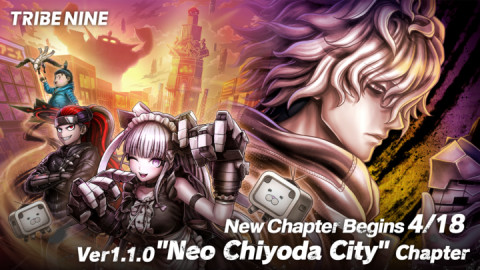
The Gold Club World Championship has come and gone, and once again Korea stands victorious in China. The last week spawned some of the best Heroes of the Storm games, and quite possibly the best Heroes of the Storm production, to date. There’s still room for improvement, but if GCWC is a sign of things to come, HotS has a bright future.
Tournament Snapshot
Over the group stage, Korean teams took the top three spots with fairly dominating performances while China and Europe vied for the last upper bracket seed. North America came in dead last.
Astral Authority and eStar Gaming were the first to be eliminated during the playoffs, followed quickly by Dignitas and SPT. Both MVP Black and ZeroPanda worked their way through opposite sides of the lower bracket after being knocked down from the upper bracket. When the two met, Black beat ZeroPanda in a swift 2-0 and went on to face MVP Miracle again in the losers finals.
The showdown between the MVP teams was filled with strange drafts and uncharacteristic misplays (again), but luck was with Miracle, and they advanced to face off against Ballistix in the grand finals.

Miracle showed some hope against Ballistix during their second game on Sky Temple, but Ballistix shut it down and took the game to match point on Battlefield of Eternity. During the draft, Miracle made unusual errors and ended up picking solo tank Varian when Johanna was clearly available.
At first Miracle looked like they might pull off an upset, but Ballstix kicked it into high gear and crushed Miracle during the early game. Morally defeated, Miracle resigned themselves to their fate, and Ballstix went on to win the championship with an impressive 18-3 overall record.
Looking at the Metagame
GCWC featured perhaps the most turbulent Heroes metagame to date. Strategy normally evolves during offline tournaments as teams learn from each other and adapt, but the shift during GCWC was especially jarring.
At the beginning of the tournament, teams almost unanimously agreed on Malfurion/ETC bans, but over time the ban priority shifted toward Heroes like Illidan and Zeratul. By the end, Tassadar was the number one priority Hero, and the well-rounded compositions seen in the earlier parts of the tournament were replaced by hard carry combos with Illidan, Tracer, and Valla.
The team best suited for adaptation was Ballistix, who transitioned seamlessly from beefy double tank compositions to the shield meta without batting an eye. Miracle was also quick to catch on, but MVP Black curiously lagged behind in comparison.
In a way, it’s a role reversal for the Korean teams. Last year, Team No Limit (also known as Team DK) was notorious for their stubborn resistance to metagame changes while MVP Black was thought to be the more versatile of the two. A year later, it’s the players from TNL on Ballistix and MVP Miracle that are the more versatile ones. This is an example of how players can continue to evolve and become better players.

China has also seen some changes over the past year. Throughout most of 2015 and 2016, eStar was absolutely dominant in their region, but things have changed quite a bit in the last few months. xia0t, the team captain and brains behind the operation, took a step back from competitive play after the summer season, and the team has been suffering ever since.
The dissolution of EDG breathed new life into other Chinese teams, but eStar has not been as fortunate. They put on a dismal display during Gold League S3, and just like MVP Black was surpassed by TNL players, eStar was surpassed by ZeroPanda and Super Perfect Team. ZeroPanda was clearly China’s crown jewel at GCWC. Their teamfights against Ballistix were precise and coordinated, despite still lacking the pristine late game macro play of Korean teams.
As for the outsiders, Dignitas and Astral Authority, we’ve seen better days from them. Dignitas admittedly hadn’t played at all the week leading up to GCWC, and it was clear that they weren’t ready to take on the Chinese and Korean teams. Although they slowly picked up the pace during the group stage to end with a decent score, they definitely showed some miscommunication and mechanical errors, despite being fairly cognizant of the metagame. Astral Authority was worse: they seemed to be a goldfish dropped in the middle of the ocean.
The most enjoyable part of the strategy at GCWC was definitely the merging of ideas, though. Everyone came with their own perceptions of what was strong, and it took lots of experimentation to figure out how to beat one another. Unlike other international competitions, the round robin format was exceptional for allowing teams to experience one another’s playstyle and formulate new strategies against their next opponents. In the end, it was survival of the fittest.
Heroes of the Storm in China
There’s no doubt that Heroes of the Storm has been popular in China, but the dedicated production from the NetEase crew was out of this world. A year ago, I wrote that the game’s future in China was bright, and now I am convinced more than ever.
The stage at the Water Cube was unbelievable, and the production almost never faltered. The small additions like AR characters on stage and MVP overlays made a huge difference in the spectating experience. NetEase used a variety of statistics onscreen for MVPs and team comparisons too, which was refreshing to say the least. The time in between games was fairly succinct, and no monumental delays happened at all over the entire course of GCWC.

Will China continue to proudly support Heroes? I think they will, and can't wait for Gold League.
Sort by:
Comments :0






